Do Havanese Puppies Change Color? (Why Havanese Coats Fade)
Havanese puppies are known for their adorable looks and friendly personalities, making them a popular choice for many dog lovers. One fascinating aspect of the breed is its potential for changes in coat color as they grow and mature.
As a family dog expert, I get asked a LOT about Havanese coat color change. It happens, and owners do NOT always expect it to happen so early in their puppy’s life. It can be a surprise!
As an owner, it’s essential to be aware of these changes so you can appreciate your Havanese puppy’s unique appearance.
The wide range of coat colors and patterns seen in Havanese dogs can shift for several reasons. These changes can be due to natural progressions in pigmentation or influenced by exposure to sunlight and other environmental factors. By understanding these transformations, owners can better appreciate their Havanese’s distinct appearance and know what to expect as their puppy matures.
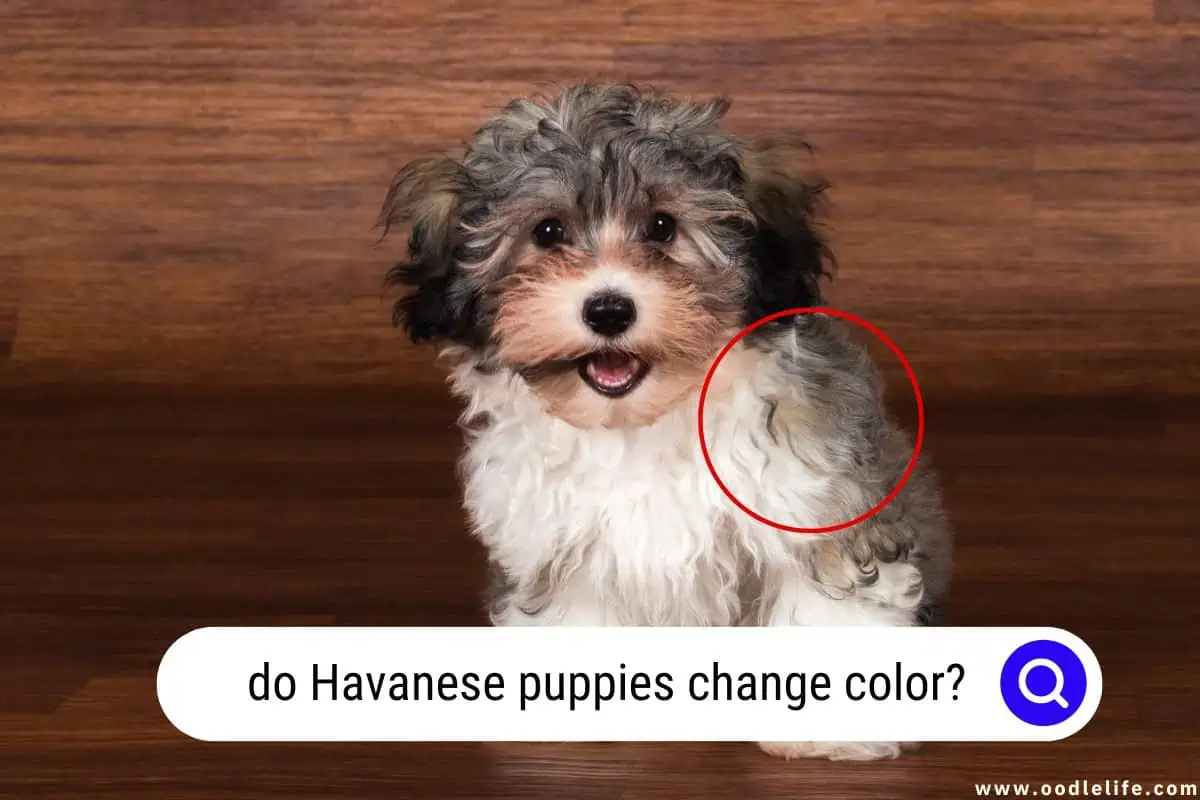
Although it might be surprising to witness your Havanese puppy’s coat color evolve, it’s just one of the many charming aspects of this delightful breed. So, keep an eye on your furry friend and enjoy the ever-changing beauty of their coat as they grow into their adult form.
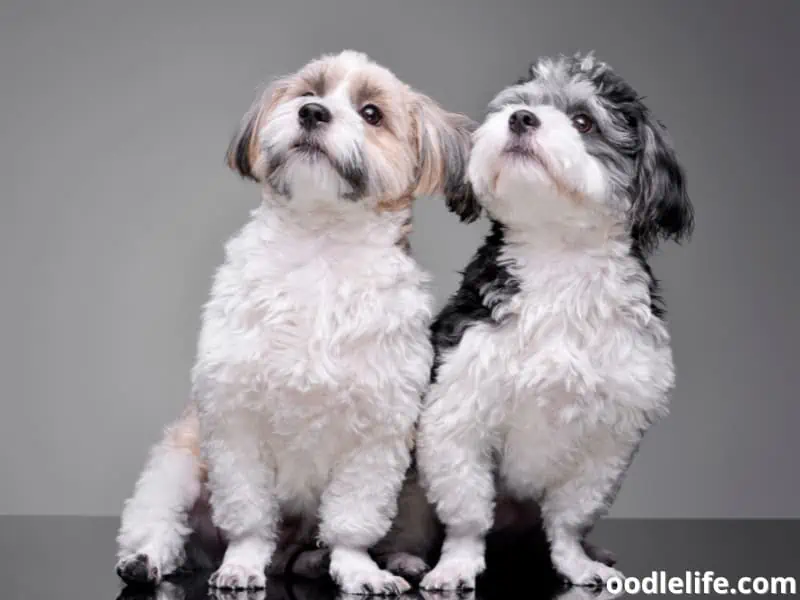
Havanese Breed Overview
The Havanese is a small, yet sturdy and charming little dog, originally hailing from Cuba. It has gained popularity around the world, and especially in the United States, where it has become a favorite among pet owners. This breed is known for its silky, wavy coat, which can come in a variety of colors.
One interesting fact about Havanese puppies is that their color may change over time as they grow into adulthood.
When it comes to temperament, these little dogs are known to be friendly, affectionate, and intelligent. They are also quick learners, which makes them relatively easy to train. Their loving personality and compatibility with families have made Havanese a popular choice for many dog owners.
The Havanese breed was recognized by the American Kennel Club (AKC) in 1995, further solidifying its status as a beloved pet. These dogs may be small in size, but they have no shortage of personality and charm.
If you’re interested in adding a Havanese to your family, it’s essential to find a responsible and reputable breeder. By doing your research and finding a breeder who is dedicated to the health and well-being of their dogs, you can ensure that you are bringing home a happy, healthy Havanese puppy.
In conclusion, the Havanese is a wonderful breed for those seeking a small, intelligent, and affectionate canine companion. Their popularity has grown for good reasons, and their adaptability makes them a great fit for various households. Just be prepared for some potential color changes as your Havanese puppy grows up – it’s all part of their charm!
Color Basics in Havanese Puppies
Havanese puppies come in a diverse range of colors and patterns, which can make them particularly appealing to dog owners. However, as these puppies grow, their colors may change or fade. In this section, we will explore the common colors in Havanese puppies and the factors that influence their coat color inheritance.
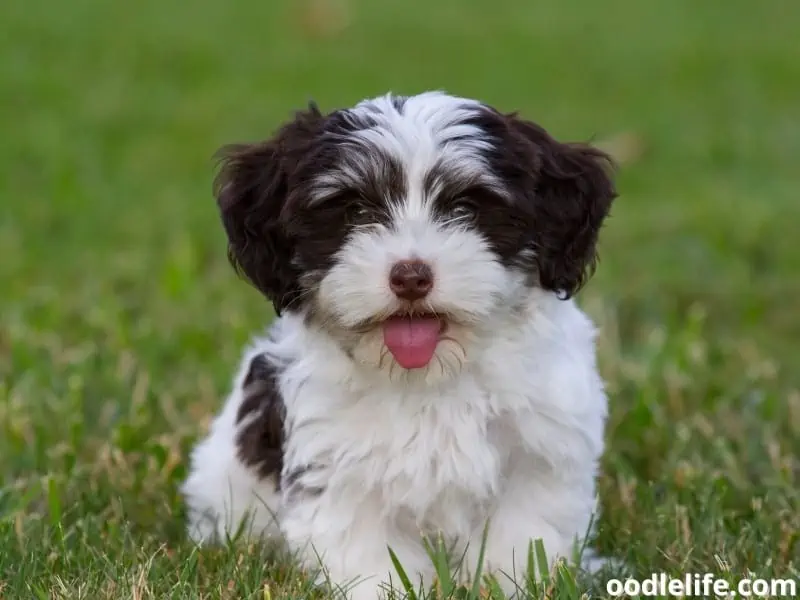
Common Colors and Patterns
Havanese puppies exhibit a variety of colors, including:
- Black
- White
- Cream
- Fawn
- Chocolate
- Silver
- Gold
- Red
These colors may also appear in combinations and various patterns, such as brindle, sable, or parti-color (two or more colors with no specific pattern). The coat of a Havanese puppy may change or fade as they grow, making their adult coat color somewhat unpredictable.
Genetics and Inheritance
The colors and patterns seen in Havanese puppies are determined by the genes passed down from their parents. Like in many other breeds, coat color in Havanese dogs is the result of complex genetic interactions. The MITF gene and MC1R gene are two examples of genes that play a role in determining a Havanese puppy’s coat color.
Both parents contribute one copy of each gene to their offspring, which combines to create the puppy’s unique coat color expression. For example, if both parents carry a gene for a specific color, the puppy has a higher chance of inheriting that color. Conversely, if neither parent has a gene for a certain color, it is unlikely that their puppies will display that color.
In conclusion, Havanese puppies offer a wide variety of colors and patterns that may change as they grow. Understanding the genetics behind their coat colors can help owners appreciate and anticipate changes in their dog’s appearance. Being aware of these changes can also assist potential owners in selecting a Havanese puppy with a coat color that suits their preferences.
Color Changes as Havanese Puppies Mature
Havanese puppies are known for their adorable, fluffy appearance and charming personalities. However, as they grow from puppyhood into adulthood, these little bundles of joy may also experience some changes in their coat color. As a Havanese owner, it’s essential to understand this transformation and be prepared for the beautiful canine you’ll have in the end.
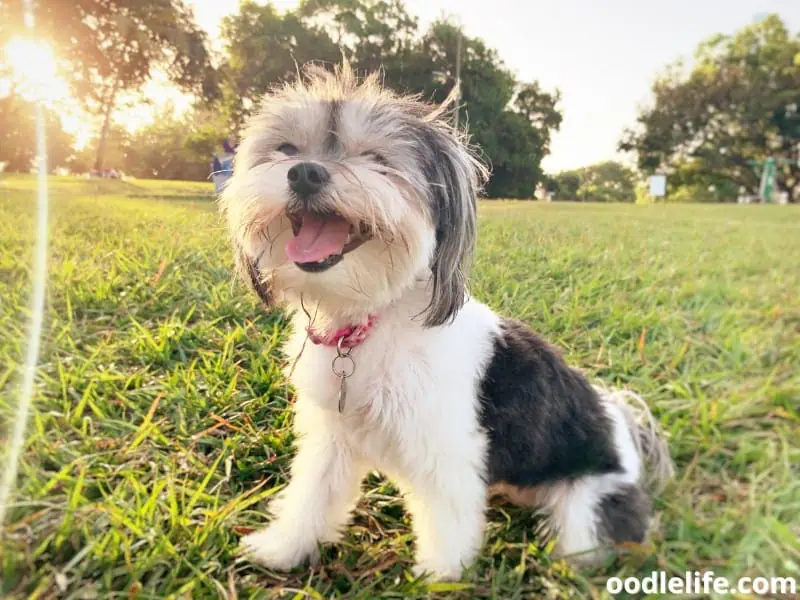
Color changes in Havanese puppies are generally a gradual process that takes place as they mature. While some puppies may retain their original hues throughout their lives, others may undergo a remarkable transformation in coat color as they age. This can happen starting from a few months old and continue until the dog reaches full maturity, around 3 years of age.
The reason behind these changes lies in the dog’s genetics, which influences how the coat color develops over time. It is not uncommon for a Havanese puppy to be born with a light, cream-colored coat that darkens into a rich chocolate shade during adulthood. On the other hand, a puppy with a dark-colored coat may lighten considerably as it matures.
These color changes do not affect the quality or health of a Havanese dog. The modifications are purely aesthetic and do not indicate any health concerns or breed standards issues. As long as your Havanese pup is well-cared for and receives proper grooming, you can expect a healthy coat regardless of any alterations in color.
In conclusion, Havanese puppies are like adorable, little chameleons with ever-changing coats. Although these transformations might be surprising at times, they’re just another part of the delightful journey of raising a Havanese. Enjoy the experience as your lovable pup grows into a stunning, mature dog with its unique, distinctive appearance!
Common Colors in Havanese Puppies
Havanese puppies come in various colors and combinations, making them one of the most diverse breeds in terms of appearance. This section will discuss the common colors in Havanese dogs.
White Havanese
White Havanese puppies are quite appealing with their pure and snowy coat. As they grow, some may develop cream or silver shades, but they typically maintain a predominantly white appearance. Keep in mind, however, that the white coat may require some extra grooming to maintain its pristine appearance.
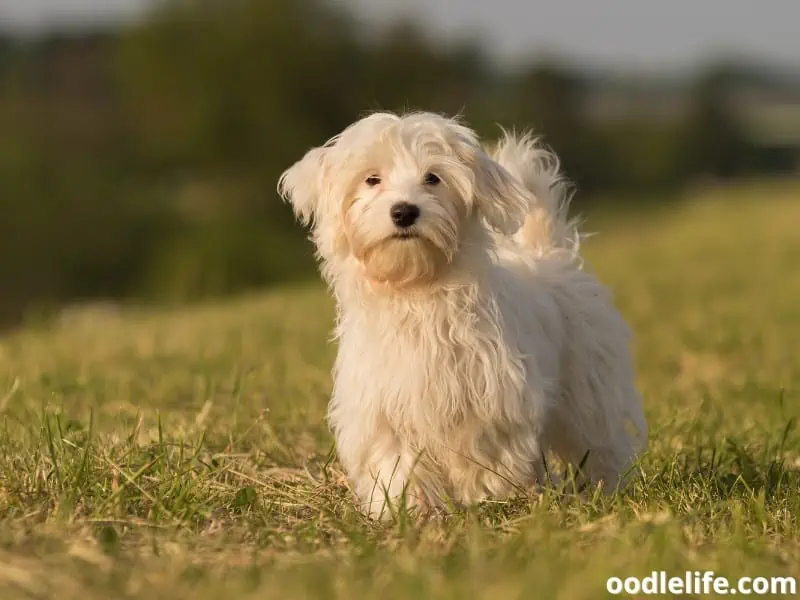
Black Havanese
Black Havanese dogs are known for their glossy and shiny coat. These pups may showcase shades of silver as they age but will generally maintain their dark appearance. Plus, their black coat is low-maintenance and doesn’t show dirt as easily as lighter colors.
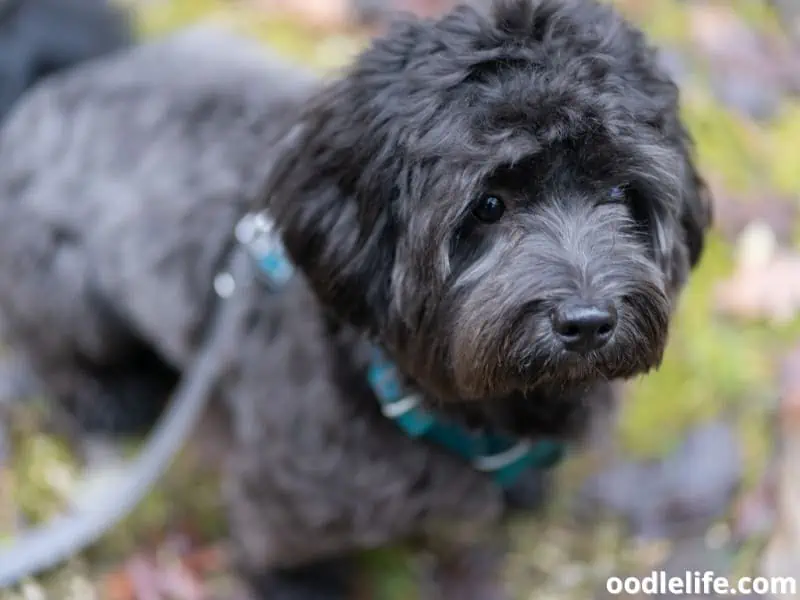
Red Havanese
The red Havanese is quite unique and eye-catching. These pups have a vibrant, warm coat that can range from a light red to a deep, rich hue. As the dog matures, the intensity of the red may slightly fade, but the distinct shade will remain.
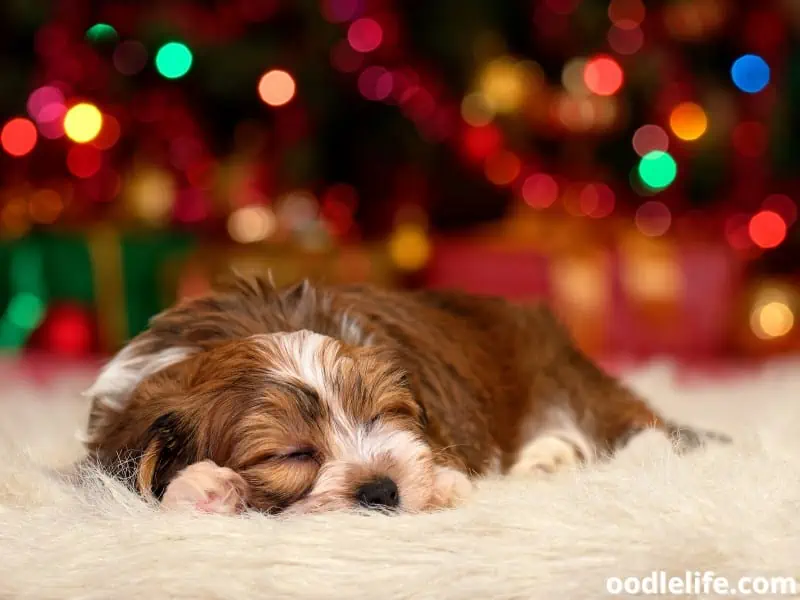
Chocolate Havanese
A chocolate Havanese is a real treat! These puppies sport a charming, brown coat that can vary from light milk chocolate to deep, dark cocoa. Chocolate Havanese may also have lighter eyes, giving them a soft and sweet appearance.
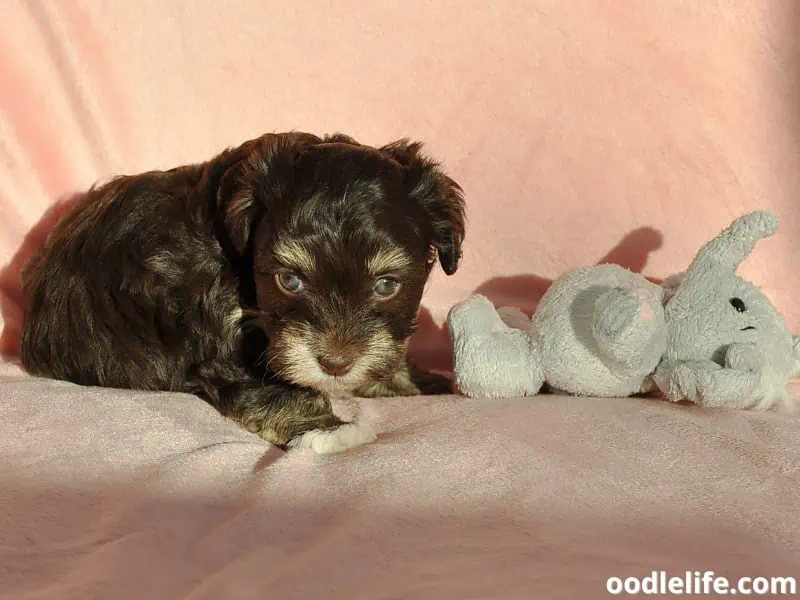
As they grow older, their coat may develop highlights or silver strands.
Cream Havanese
With a soft, buttery coat, cream Havanese puppies look simply adorable. Their light-colored coat may have subtle shades of gold or beige. As they mature, the coat might lighten or darken, but the gentle cream color typically prevails.
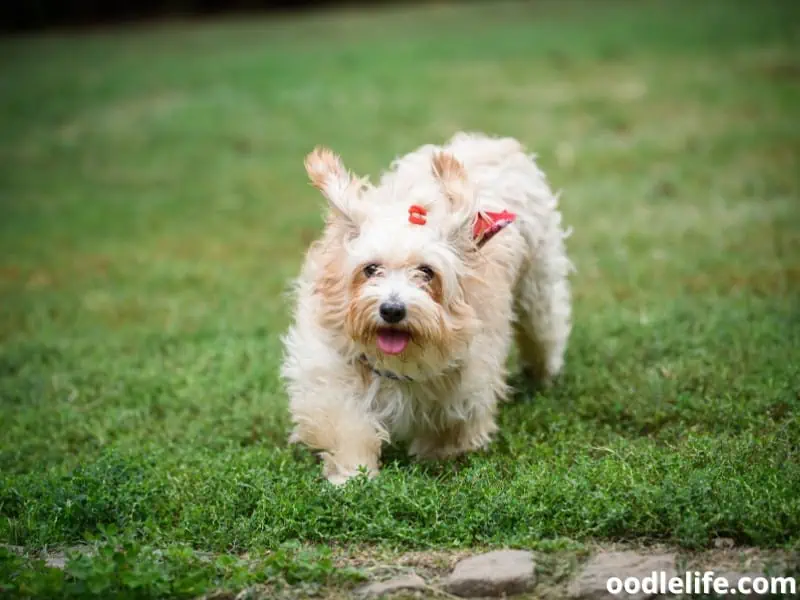
In summary, Havanese puppies come in various colors, including white, black, red, chocolate, and cream, making them an exciting and diverse breed. Choose your favorite, and enjoy the rewarding experience of being a Havanese owner!
Specific Patterns and Markings in Havanese
Havanese puppies come in a range of colors and patterns that can make each dog unique. It’s important for potential owners to be aware of these patterns when considering whether a Havanese is the right breed for them.
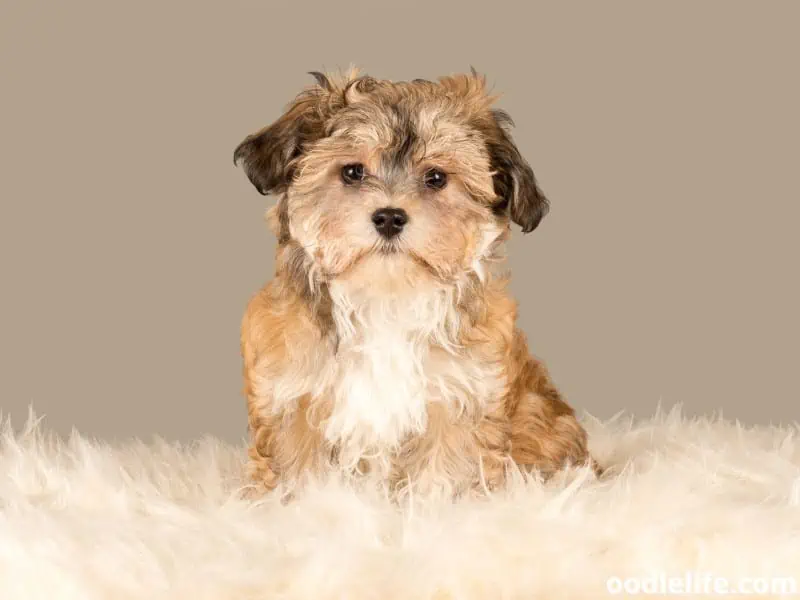
Solid Havanese
Solid Havanese puppies are found in a range of colors, some of which may change or lighten as they grow older. This includes solid black and solid white coats. Other solid colors are fawn, gold, and cream.
The solid Havanese puppies might have few minor color spots or markings, but generally, their coat will be of one color from head to tail.
Brindle Havanese
The Brindle Havanese has a coat that consists of stripe or swirl patterns which are formed by two or more colors. These colors often blend together, creating an interesting and unique pattern. This pattern can slightly change or develop as the puppy grows, and it’s quite common for a Havanese puppy to look different from its adult self.
Sable Havanese
Sable Havanese dogs are characterized by their multicolored hairs, often with darker tips on a lighter base color. This gives their coat a beautiful, shaded appearance that can change slightly over time. These changes are usually subtle and may only be noticeable when comparing puppy and adult pictures.
Parti and Other Patterns
Parti Havanese puppies usually sport two or more colors on their coat. These patterns could include Irish Pied, Parti Belton, and other mixed color patterns. However, keep in mind that these patterns may not be consistent throughout the breed, and each Havanese puppy will have its distinctive marking.
Just like a box of chocolates, getting a Havanese puppy can be full of surprises. Owners should embrace their Havanese’s unique color and patterns, regardless of whether they change over time.
Factors Affecting Havanese Puppy Coat Colors
Havanese puppies are known for their diverse coat colors, which can include a variety of shades and patterns. While the coat color is primarily determined by genetics, there are a few factors that may cause slight changes in a Havanese puppy’s coat color over time.
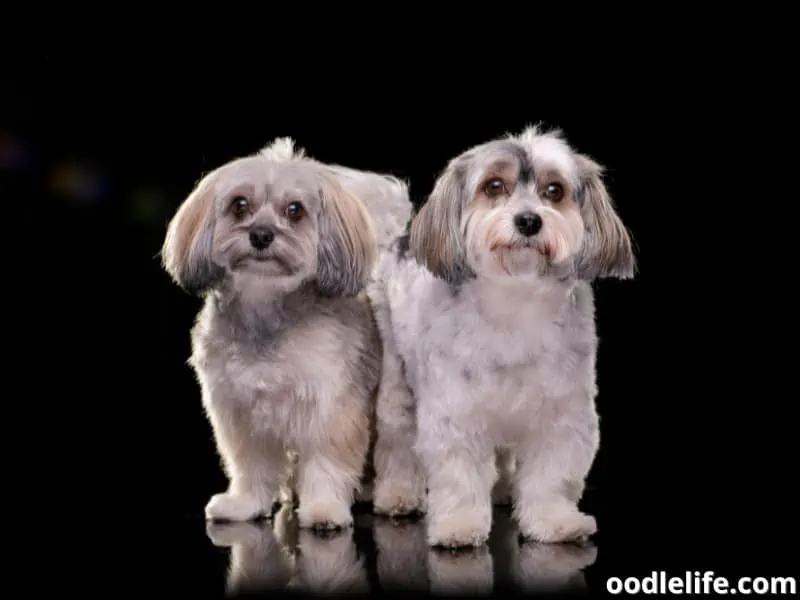
Coat color in Havanese puppies is determined by a combination of genes from both their mother and father. This means that colors can vary widely even within a single litter. Furthermore, there are specific modifying genes that can cause the base color of your Havanese puppy’s coat to take on a different appearance.
For example, the sable Havanese has a base color of black, brown, or silver, with lighter hair tips that give them a unique look. In contrast, the fawn Havanese has a cream or light gold coat, showcasing a different base color altogether.
One of the mysterious aspects of Havanese puppy coat colors is that their initial color might change as they grow and mature. This is due to a phenomenon known as “spring” and “gleam”. Spring refers to the lighter hairs that grow in after the puppy fur is shed, while gleam refers to the shimmery quality of the adult coat.
Both factors can contribute to a noticeable change in coat color as the Havanese puppy matures.
Another factor that affects the appearance of a Havanese puppy’s coat is the pigment in their eyes and nose. Some puppies may have lighter pigments in these areas when they are young, but this can darken as the puppy ages. This change in pigment can have a subtle effect on the overall appearance of the coat, making it seem like the coat color has changed.
In conclusion, while genetics plays a major role in determining your Havanese puppy’s coat color, there are other factors that can lead to a slight change in appearance over time. Owners should be aware of these factors to better understand their Havanese’s coat color development, ensuring they can appreciate the unique beauty of their furry friend.
Maintenance and Grooming of Havanese Coats
Havanese puppies are known for their silky, soft coats that often change color as they mature. Proper grooming and maintenance are essential to keep your furry friend looking their best. In this section, we’ll discuss some tips and tricks to help you care for your Havanese pup’s beautiful coat.
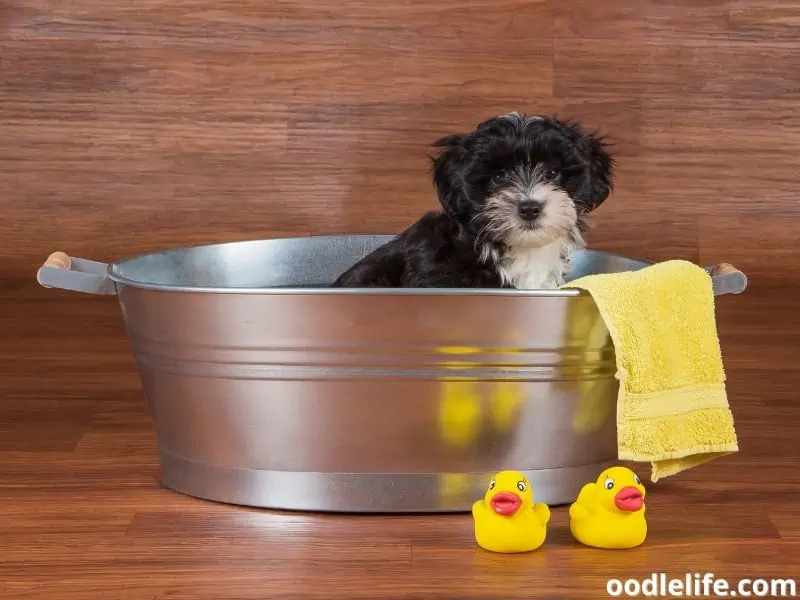
First things first, regular brushing is crucial to prevent tangles and matting in your Havanese’s coat. Aim to brush their coat at least once or twice a week, using a pin brush or slicker brush. This will not only keep their coat looking shiny and well-maintained but also help distribute natural oils for a healthy skin.
Another important aspect of grooming is keeping an eye on their white hair. Havanese puppies may start with a lighter coat which gradually changes color as they grow older. It’s a natural process, but proper bathing and grooming can ensure the white hair stays vibrant.
Use a mild, high-quality dog shampoo and conditioner suited for their coat type, and bathe them approximately once a month.
Trimming your Havanese’s coat comes down to personal preference. Some owners prefer to keep the coat long, while others opt for a shorter, more manageable style. Regardless, you should trim the hair around their eyes and ears to improve visibility and reduce the risk of infections.
Finally, don’t forget about their nails, teeth, and ears. Regularly clip their nails, brush their teeth, and clean their ears to keep your Havanese healthy and happy. Integrating these grooming tasks into your routine will help your pup grow accustomed to the process, making grooming sessions a pleasant experience for both of you.
Maintaining your Havanese’s coat and ensuring proper grooming can be a fun bonding activity. With consistency and care, your Havanese pup’s coat will stay beautiful and healthy as they grow and change colors.
Other Considerations for Havanese Owners
When bringing home a new Havanese puppy, there are other significant aspects to consider besides their color change. Havanese are known for their friendly temperament, which makes them great companions. However, early obedience training is essential to ensure they grow into well-behaved adults.
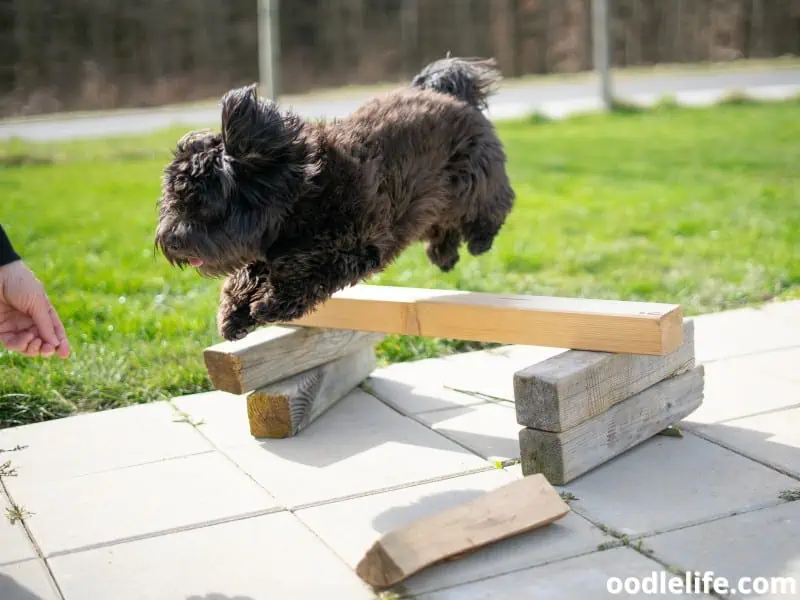
A critical aspect for Havanese owners is to establish a good relationship with a vet. This is especially important when your puppy is young, as regular check-ups can ensure your Havanese remains healthy and can help to identify any potential health issues early on.
One fun fact for Havanese owners to keep in mind is that these little dogs are natural-born entertainers. They love to show off their skills and charm, making them excellent candidates for learning fun tricks. Training sessions with lots of positive reinforcement can help you turn your Havanese into the star of the show!
As a Havanese owner, it’s crucial to keep up with grooming needs, like regular brushing and trimming to avoid matting in their long, silky coat. It’s not merely for aesthetics; proper grooming prevents skin infections and ensures your Havanese remains comfortable and in good shape.
Lastly, don’t forget to connect with other Havanese owners! Having a strong network of fellow Havanese enthusiasts can provide valuable references, share personal experiences, and offer tips on how to best care for your furry friend. After all, a little support goes a long way in raising a happy, healthy Havanese!